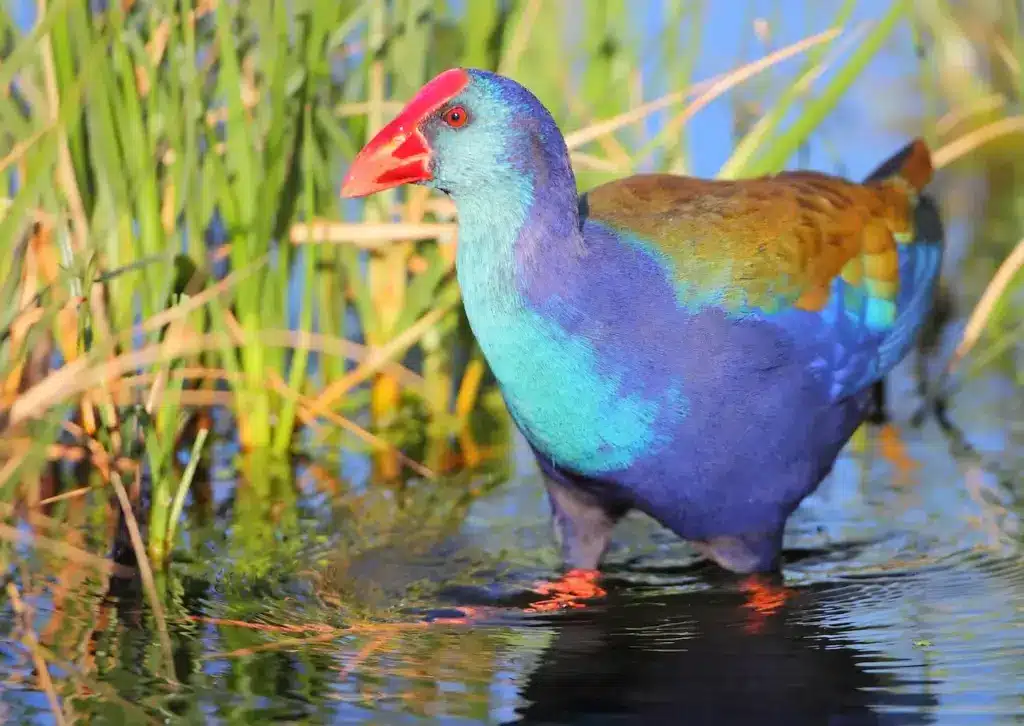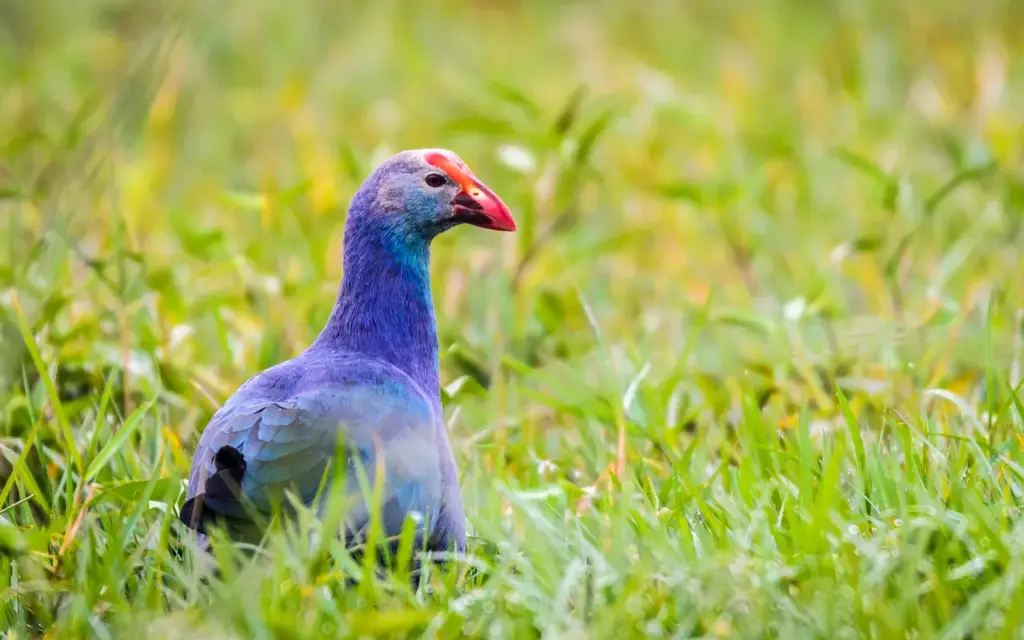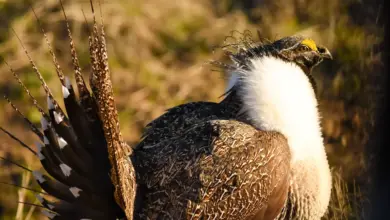African Purple Swamphen
The African Purple Swamphen (Porphyrio p. madagascariensis) – previously known as African Purple Gallinules – are native to Egypt, sub-Saharan Africa and Madagascar.
African Purple Swamphens are associated with wet areas with high rainfall, swamps, lake edges and damp pastures.
They typically occur in pairs or larger communities. In urban areas, these birds have shown to quickly grow confiding.
Within their range, this species varies from being common to being uncommon.

Description
- Size: about the size of a chicken
- Bright plumage; bronze-green or green-blue back and scapulars (shoulder feathers)
- Red bill and frontal shield
- Large feet
Diet / Feeding
They feed on tender shoots, plant material, as well as animal food, such as eggs, ducklings, small fish and invertebrates, including snails.
Breeding / Nesting
Breeding activities often correlate with the peak rainfall, when food is more readily available.
They nest in warm reed beds. To initiate breeding, the males perform elaborate courtship displays, which involve holding water weeds (nesting material) in their bills and bowing to the females while making loud chuckling vocalizations.
Poplations found in the western parts of their range appear to be mostly monogamous; while those found in the eastern parts typically breed in cooperative breeding groups with may consists of several females and males sharing a nest or nest helpers (typically previous offspring) helping the breeding pair raise the young.
They nest in large pads of interwoven reed flags, on masses of floating debris, amongst matted reeds or in swamps. The nests are typically situated slightly above water level.
A female lays between 3 – 6 speckled eggs that range in color from yellow-stone to reddish-buff. Communal nests may contain up to 12 eggs.

Males and females (breeding pairs and helpers) share the incubation of the eggs, which lasts about 23 – 27 days to hatching. The hatchlings are covered with black downy feathers.
The chicks are fed by parents and nest helpers for 10 – 14 days at which point most are independent.
Calls / Vocalizations / Sounds
Calls: loud, high-pitched screeches or subdued musical tuk-tuk“





